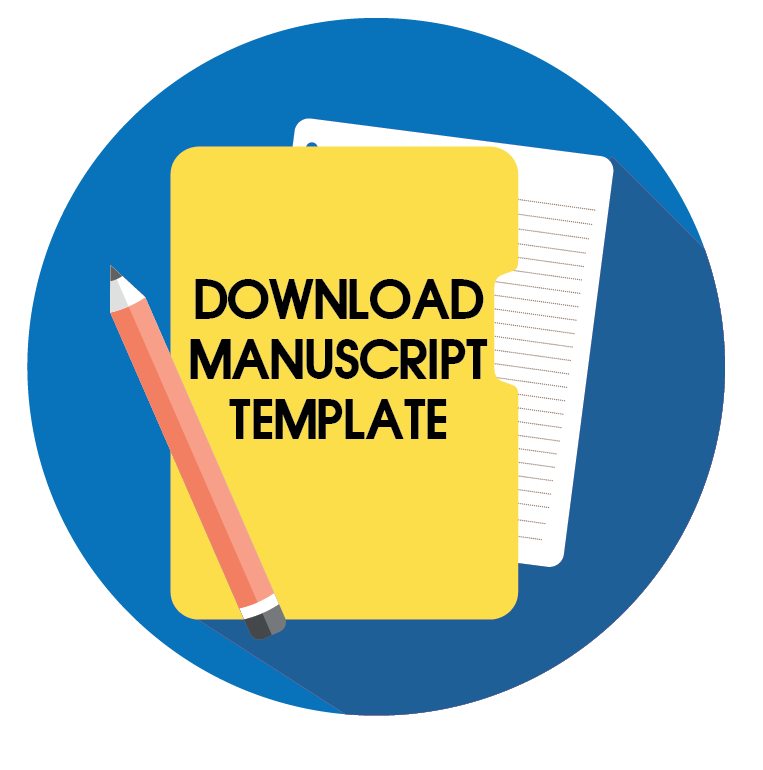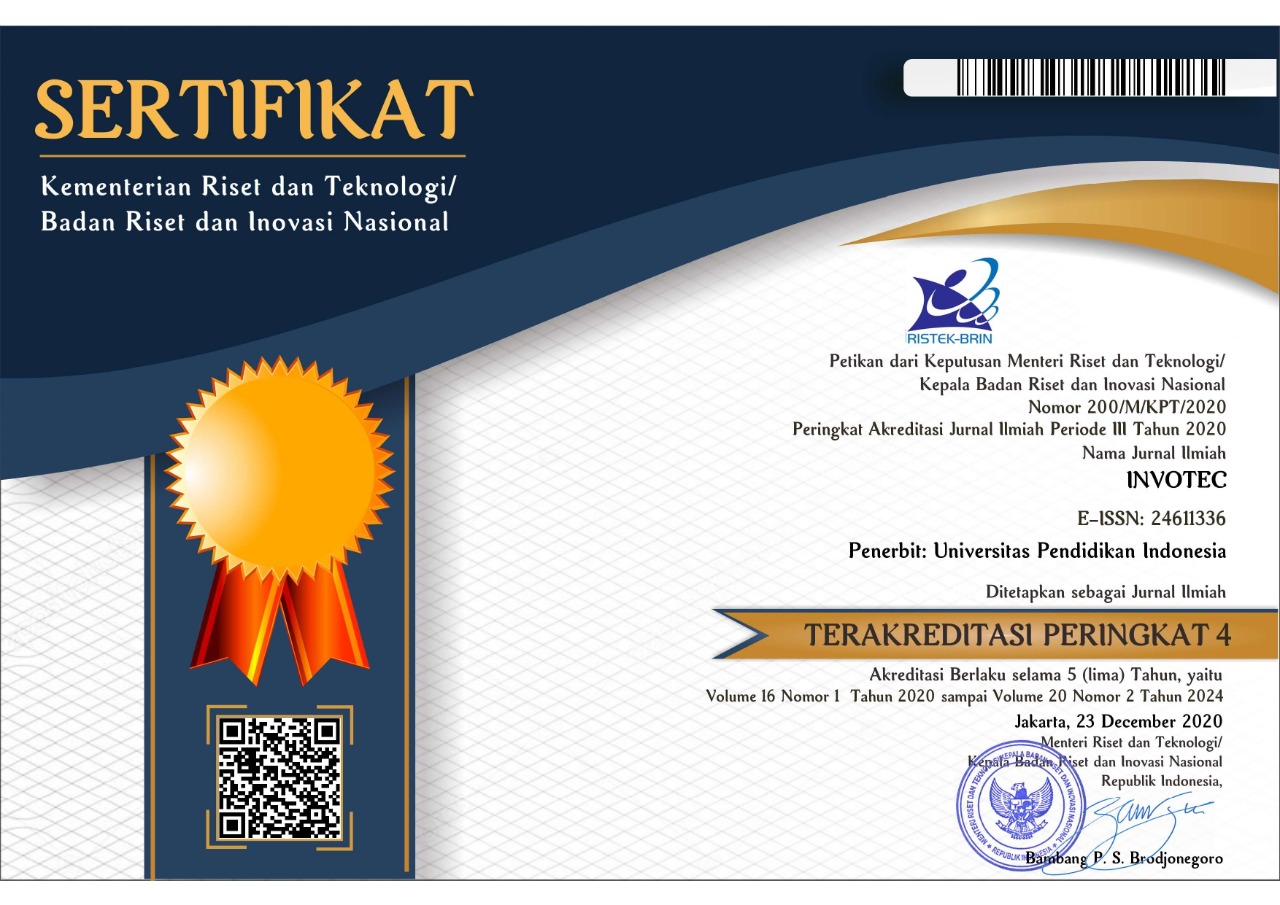Online Submissions
Already have a Username/Password for INVOTEC?
Go to Login
Need a Username/Password?
Go to Registration
Registration and login are required to submit items online and to check the status of current submissions.
Author Guidelines
Author Guidelines for Journal Submission
1. General Submission Guidelines
- Originality: Submitted articles must be original, unpublished, and not under consideration elsewhere. Any instances of plagiarism will result in immediate rejection.
- Language: Manuscripts must be written in English, ensuring clarity and academic rigor.
- Manuscript Length: The manuscript should be between 2,000 and 6,000 words, including references, tables, and figures.
- Template Compliance: Manuscripts must be formatted according to the provided journal template to ensure consistency in publication.
- Submission Platform: All submissions must be made through the journal’s online submission system. Manuscripts submitted via email or other means will not be considered.
- Proofreading: Authors must proofread their submissions before final submission to eliminate typographical or grammatical errors.
- File Format: Manuscripts should be submitted in Microsoft Word 2003 or later (DOC, DOCX).
2. Formatting Requirements
- Font:
- Title: Arial 14 pt, bold
- Author names: Arial 12 pt, bold
- Author affiliations: Arial 10 pt, italic
- Body text: Arial 11 pt, 1.5 line spacing, justified
- Section titles: Uppercase, Arial 11 pt, bold
- Page Layout:
- Margins: 1-inch margins on all sides
- Page numbers: Centered at the bottom of each page
- Tables and Figures:
- Tables must be numbered sequentially (Table 1, Table 2, etc.) with captions placed above the table.
- Figures must be numbered sequentially (Figure 1, Figure 2, etc.) with captions placed below the figure.
- Tables and figures should be referenced in the text and placed at the end of the document in the initial submission.
- Acceptable figure formats: PNG, TIF, EPS, PPTX, DOCX.
3. Manuscript Structure
Title Page
- The first page should contain:
- Article title (uppercase, bold, max 12 words)
- Author names and affiliations (without titles such as Dr., Prof., Ph.D.)
- Corresponding author's email address
- Acknowledgments and author notes (if applicable)
Abstract and Keywords
- Abstract: Maximum 250 words, summarizing research objectives, methods, findings, and conclusions. Formatting: Arial 11 pt, 1.5 line spacing.
- Keywords: 3-5 keywords, separated by commas, in alphabetical order.
1. INTRODUCTION
- Provide background information, research problem, significance, and objectives.
- Include a brief literature review without subheadings.
- Word limit: 600 words.
2. METHOD
- Describe research design, data collection, sample selection, and analysis methods.
- Avoid unnecessary theoretical explanations; focus on practical applications.
- Formatting: Times New Roman 12 pt, 1.5 line spacing.
- Word limit: 400 words.
3. RESULTS AND DISCUSSION
- Present research findings with clear data visualization (tables, figures, graphs).
- Discuss and analyze results in relation to existing literature.
- Word limit: 2,500 words (excluding tables and figures).
- Formatting: Times New Roman 12 pt, 1.5 line spacing.
- Citation guidance:
- Avoid lengthy theoretical citations; focus on methodological application.
- Example (to be avoided):
- "Sugiyono (2014, p. 6) states that: 'Research methods can be interpreted as a scientific way to obtain valid data..."
- "Sugiyono (2013:116) stated that the sample is part of the number and characteristics owned by the population."
4. CONCLUSION
- Provide a concise summary of findings and their implications.
- Avoid bullet points or numbering; use narrative form.
- Word limit: 250 words.
- Formatting: Arial 12 pt, 1.5 line spacing.
5. REFERENCES
- Follow APA (7th edition) format.
- Minimum 80% of references should be peer-reviewed journal articles.
- Books should be published after 2010, unless essential.
- Reference examples:
- Journal: Appleyard, D. (1970). Styles and methods of structuring a city. Environment and Behavior, 2(3), 100-107.
- Book: Lynch, K. (1960). The image of the city. Cambridge: MIT Press.
- Edited Book Chapter: Redei, A., & Kelemen, P. (1969). The presence of platelets. In A. Bertelli & J.C. Houck (Eds.), Inflammation biochemistry (pp. 161-165). Chicago: Locke.
6. Supplementary Materials / Appendix A
- Additional content that supports the main article (e.g., questionnaires, extended data tables, technical details) should be included as Appendix A.
- Each supplementary figure/table must be numbered separately (e.g., Table A1, Figure A1).
7. Submission Process
- Ensure compliance with the journal’s template.
- Submit via the online journal system.
- The manuscript undergoes double-blind peer review.
- Authors may be required to revise and resubmit before final acceptance.
8. Ethical Considerations
- Plagiarism Policy: The similarity index should be below 20%.
- Conflict of Interest: Authors must disclose financial or personal relationships that may influence research.
- Human Subject Research: Ethical approval must be obtained if human participants are involved.
Article template
Submission Preparation Checklist
As part of the submission process, authors are required to check off their submission's compliance with all of the following items, and submissions may be returned to authors that do not adhere to these guidelines.
- The manuscript is original and not under consideration elsewhere.
- The submission file is in Microsoft Word, OpenOffice, RTF, LaTeX, or WordPerfect.
- URLs for references (if available) are provided.
- The text follows all formatting requirements.
- Illustrations, figures, and tables are included within the text at appropriate points.
- A blind review has been ensured (for peer-reviewed sections).
Copyright Notice
Authors who publish with this journal agree to the following terms:
- Authors retain copyright and grant the journal the right of first publication, licensed under Creative Commons Attribution.
- Authors can distribute their work (e.g., institutional repository, book) with acknowledgment of its initial publication in this journal.
- Authors must sign a copyright transfer agreement upon final proof approval before publication

This work is licensed under a Lisensi Creative Commons Atribusi-BerbagiSerupa 4.0 Internasional.
Privacy Statement
The names and email addresses entered in this journal site will be used exclusively for the stated purposes of this journal and will not be made available for any other purpose or to any other party.




